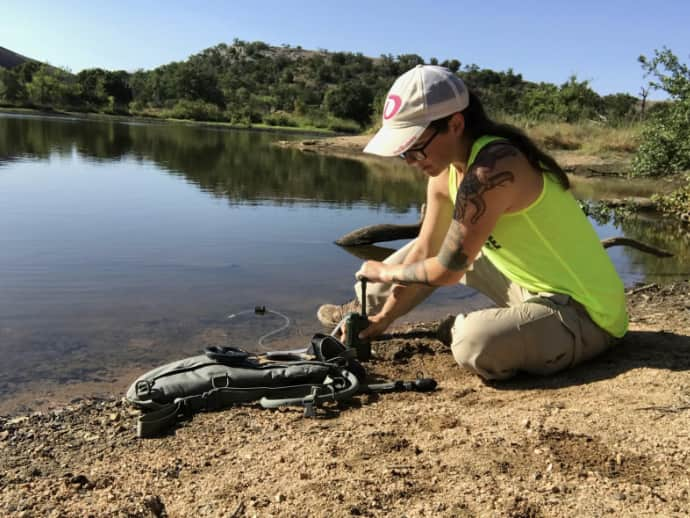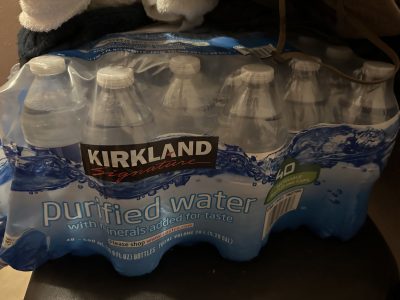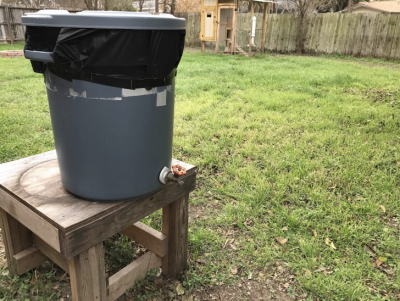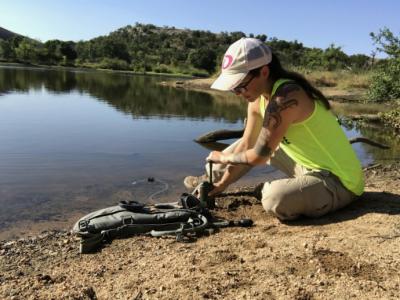Morgan Rogue 02.09.23

Water storage is the biggest pain point when it comes to preparedness.
In general, I recommend two gallons of water per person, per day. This is because one gallon may only be enough for drinking.
Water is used for drinking, cooking, cleaning and hygiene. While you may take fewer showers or baths, you’ll still be using water to at least wash your hands and clean dishes.

The easiest way to stock up on water would be to purchase a gallon or two during your normal grocery shopping. Bottles of water can last many years, especially when kept out of direct sunlight.
It’s unrealistic to expect anyone to store 1 year’s worth of water because of the sheer bulk & weight. Many have said that a swimming pool is a great option for a years worth of water, but if it’s not properly taken care of, that water can turn bad quickly and you’ll need distillation or reverse osmosis to make it potable for any purpose. You’ll also need to keep a cover on it to keep it from evaporating.
Get creative with your water storage: collect rainwater, find local water sources (though make sure you’re aware of how to haul the water), fill your tubs and sinks with water for as long as the water flows from the tap. In fact, fill everything that can accept water. If you have a water heater, that can hold anywhere from 40-120 gallons. That’s a lot!
You can also store some water in your vehicle, dark shed or even your garage. Cover it and keep it out of direct sunlight. It’s ok if water gets warm, just keep it out of direct sunlight.
Here’s how to make an easy rainwater collection setup:

Materials you’ll need:
- 50-gallon trash can with lid and landscape fabric
- 3/4″ garden spigot
- Double threaded bulkhead fitting with internal thread size of 3/4”
- Scissors
- Teflon plumber’s tape
- Black marker
- Razor blade or heavy-duty shears
- Gorilla Tape®—do not substitute duct tape.
How to put it together:
- Place the bulkhead near the bottom of the trash can and trace a circle around it. Leave enough room near the bottom to screw in the nut on the back of the bulkhead. Cut a hole where you marked.
- Insert the bulkhead through the hole and screw the back nut on and make sure it’s snug.
- Take the teflon tape and wrap it around the threading of the garden spigot. Wrap it around three or four times.
- Screw the garden spigot into the bulkhead. Make sure the spigot is snug and that it’s facing downwards. If it doesn’t end facing downwards, you can remove it and add more teflon tape as needed.
- Take the trash can lid and cut a hole in the top with a razor blade or heavy shears.
- Make the hole about the size seen in the picture above. Set aside.
- The landscape fabric is there to keep mosquitoes and debris out. Place the landscape fabric over the opening of the trash can. Cut so that excess fabric hangs over all sides.
- Place the trash can lid on top of the fabric, then use the Gorilla Tape® secure the fabric against the trash can. Make sure the fabric is taut over the barrel when taping.
- At this point, construction is complete. Make sure that it’s raised off the ground. Doing so will make it easier to collect water from the system and to keep it in good condition.
- Test the barrel to make sure there aren’t any leaks. Pour enough water into the barrel so that water comes through when you open the spigot. Also check the rest of the barrel for leaks. This test will also help you determine if the fabric is taut. The water should accumulate in the middle of the fabric and eventually drain through.
- Place the rain barrel under a gutter, or you can place it somewhere that will guarantee that it gets direct, concentrated rain.
- You can also purchase a 55 gallon drum and connect rain gutters to the drum. If you have more space, you can get a 275 gallon tote and connect rain gutters to it.

Here are some water purification methods:
- Bleach (using 6% bleach)
- 1 quart – 2 drops
- 1 gallon – 8 drops
- 2 gallons – ¼ tsp
- 4 gallons – ⅓ tsp
- 8 gallons – ⅔ tsp
- Water purification tablets
- Filtering and boiling – boil for 1 minute
- Grayl water bottles
- Berkey® or similar system
- Distillation
- Reverse osmosis system
- Water purification pump
- UV sytem
I would recommend having a variety of water purification methods. For instance, we use a Berkey® every day, but we have water purification tablets as a backup. We use bleach when sanitizing rainwater. We also have a pump system for camping and as an at-home backup. In addition, there’s always filtering and boiling, as long as we have some type of heat source.
How to filter and boil water:
- Filter out all the big stuff through a clean towel, make sure it’s cotton, like a cotton bandana or kitchen towel.
- Put the filtered water in a pot and bring it to a rolling boil
- Let boil for no more than 3 minutes, even at higher altitudes, it’s not necessary to boil more than 3 minutes.
- Let cool and use as needed.
How to clean a container to be filled with water:
- Clean the container with soap and water.
- Fill the container with clean water.
- You may add bleach according to the chart above.
- Keep stored in a dark place, rotate every 1-2 years.
Hauling water is an option but it’s typically a last resort because of the sheer amount of time, effort and extra security needed to accomplish hauling water. However, you can get creative. Get a trailer for your bicycle and carry around a few jugs of water in the trailer.
One last consideration, if you’re on a well, what kind of pump are you using? Could you continue to pump water even without electricity? How about a hand pump or a pump on solar? What about a holding tank so you’re not using the pump (and the electricity that goes with it) that often?
Use a combination of all of the above options and you’ll have an ample supply of water no matter what may come your way.

